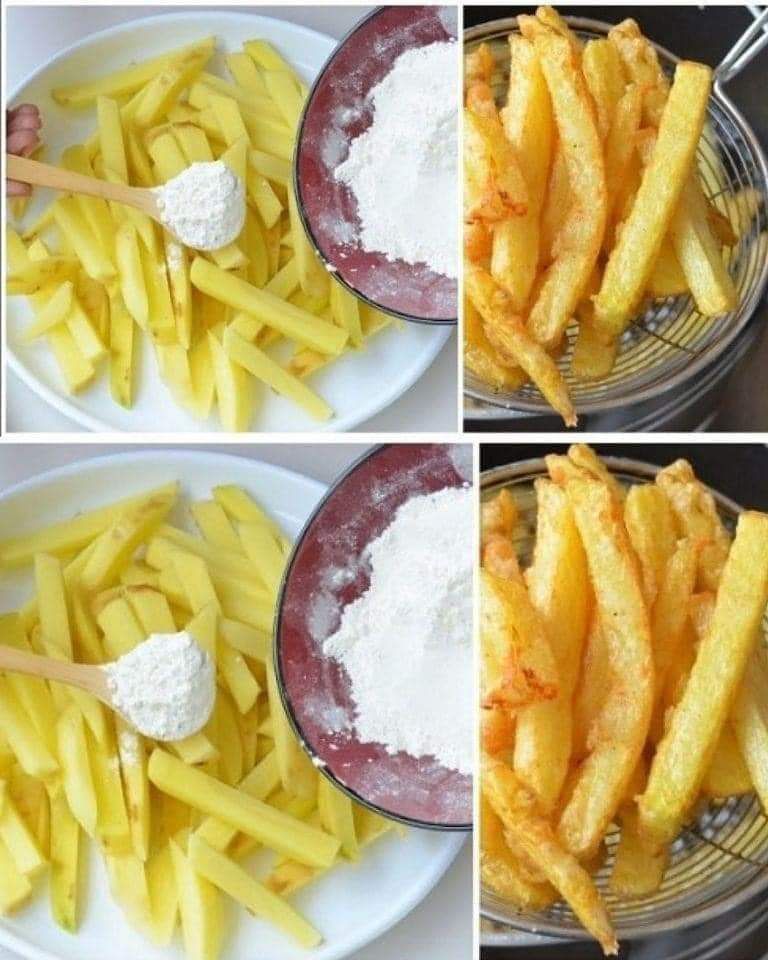ADVERTISEMENT
**Discover This Vinegar Trick to Get Crispy French Fries: The Secret to Perfectly Crispy Fries Every Time**
French fries are one of the most beloved comfort foods worldwide. From fast food restaurants to gourmet dining experiences, crispy French fries are always a crowd-pleaser. While achieving that perfect, golden-brown crispiness at home can sometimes feel elusive, there’s one simple secret that many home cooks overlook—vinegar. Yes, you read that correctly. Adding vinegar to your French fries recipe can help you achieve the crispiness you’ve been craving, all with a little scientific know-how and a few key steps.
In this article, we will delve deep into the world of French fries, explore the science behind vinegar’s role in getting them extra crispy, and walk you through a foolproof recipe to make crispy French fries at home. Whether you prefer your fries thick or thin, seasoned or plain, this vinegar trick will work wonders to enhance the texture and flavor of your fries. Prepare to take your French fries to the next level!
—
### The Science Behind Crispy French Fries
Before diving into the vinegar trick, let’s understand the science of what makes French fries crispy. Achieving the perfect French fry involves a delicate balance between moisture content, temperature, and timing. Here’s a breakdown of the essential factors that contribute to crispy fries:
#### 1. **Potato Selection**
Not all potatoes are created equal when it comes to making French fries. The key to crispy fries lies in choosing the right type of potato. The ideal potato for frying is one that’s high in starch and low in moisture. **Russet potatoes** (also known as Idaho potatoes) are the go-to variety for fries because they have a high starch content, which leads to a fluffy interior when fried, while their lower moisture content helps achieve that crispy exterior.
#### 2. **Cutting the Potatoes**
How you cut your potatoes also plays a role in achieving the perfect crispiness. Thicker fries tend to be softer on the inside, while thinner fries, like shoestring fries or waffle fries, have more surface area, resulting in a crispier finish. For the crispiest fries, aim for evenly sized potato slices, whether you prefer thicker steak fries or thinner matchstick fries.
#### 3. **Soaking the Potatoes**
Soaking the potatoes in cold water is an essential step that many cooks skip. The reason for soaking is to remove excess starch from the surface of the potatoes, which can cause the fries to be sticky and lead to uneven cooking. Soaking the fries for at least 30 minutes (or up to a few hours) helps to ensure that your fries cook evenly and become crispy. This step also prevents the fries from becoming soggy.
#### 4. **Double Frying**
One of the secrets to restaurant-quality French fries is double frying. The first fry cooks the potatoes through, and the second fry crisps up the exterior, resulting in the perfect balance of a soft interior and a crispy, golden crust. The oil temperature during each fry is crucial to achieving the ideal texture. The first fry should be done at a lower temperature (around 325°F), while the second fry should be done at a higher temperature (around 375°F).
#### 5. **Oil Choice**
The type of oil you use for frying can also impact the crispiness of your fries. Oils with a high smoke point, such as **vegetable oil**, **canola oil**, or **peanut oil**, are ideal for deep frying. These oils can withstand high temperatures without burning, allowing you to achieve crispy fries.
#### 6. **The Role of Vinegar in Crispy Fries**
Now, let’s get to the real secret behind crispy French fries: vinegar. Vinegar is a game-changer when it comes to making fries crispy. But how does it work?
When you soak potatoes in water, the starch on the surface of the potatoes absorbs water and swells. By adding vinegar to the soaking water, you help break down the starch, which prevents it from absorbing too much water. This results in a less sticky surface on the fries, allowing them to crisp up better during frying. Vinegar also raises the boiling point of water, which aids in creating a firmer texture for the fries.
But the benefits of vinegar don’t stop there. Vinegar can help:
– **Tighten the structure**: The acid in vinegar helps tighten the potato’s cell structure, leading to a firmer and crispier exterior.
– **Maintain color**: The vinegar helps maintain the golden-brown color of the fries, ensuring they stay appealing and don’t turn too dark or overly crispy.
– **Add a subtle flavor**: While vinegar doesn’t overpower the fries, it can subtly enhance their flavor, providing a slight tang that complements the salty, savory taste of the fries.
Now that we understand the science behind vinegar’s role in crisping up fries, let’s dive into the practical application and walk you through a simple, foolproof method for making crispy French fries at home using this vinegar trick.
For Complete Cooking STEPS Please Head On Over To Next Page Or Open button (>) and don’t forget to SHARE with your Facebook friends
